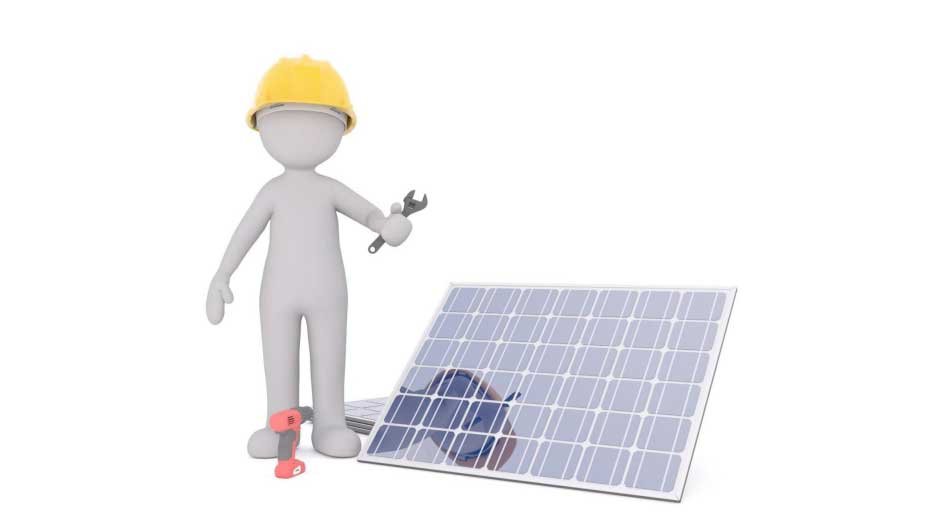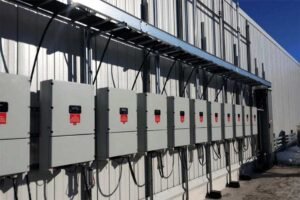Are you frustrated with unexpected solar installation problems? Solar energy is a great investment, but even the best systems can face issues over time.
From low power output to inverter glitches, installation troubleshooting can feel overwhelming, especially if you’re unsure where to start. But don’t worry-most problems are fixable with the right approach.
This article will guide you through common solar installation problems and expert solutions to help keep your system running smoothly. Get ready to solve issues like a pro!
Contents
- 1 Check the Solar Panels for Obstructions or Dirt
- 2 Inspect for Shading at Different Times of the Day
- 3 Check the Inverter for Faults
- 4 Test the System’s Voltage and Current
- 5 Examine Wiring for Loose or Corroded Connections
- 6 Monitor the System for Consistent Performance
- 7 Evaluate the Solar Charge Controller
- 8 Check for Ground Faults
- 9 Verify Panel Placement and Tilt Angle
- 10 Assess the Battery Health in Storage Systems
- 11 Examine Cables for Insulation Damage
- 12 Contact Professional Support if Needed
- 13 Shine a Light on Solar Installation Problems for Brighter Energy Solutions
Check the Solar Panels for Obstructions or Dirt
Solar panels must be free of anything that could get in the way of them making energy. Debris like dirt, leaves, and other things can block the sun, which makes the system work less well. Regular checks and cleaning help make sure that the screens are working at their best.
After strong winds or when the seasons change is the best time to look for damage. Over time, even small things like dust can make panels less effective. Solar panels should be serviced regularly to keep the system running at its best.
Inspect for Shading at Different Times of the Day
Shading can have a big impact on solar panel efficiency, especially during peak sunlight hours. Trees, buildings, or newly placed objects might cast shadows on the panels. It is essential to monitor shading patterns throughout the day.
Observing the panels at different times can reveal unexpected shadows. In some cases, trimming trees or adjusting objects can resolve shading issues. Doing this improves the overall energy production of the system.
Check the Inverter for Faults
The inverter is a key component that converts direct current (DC) to alternating current (AC) power. Inverters are prone to faults, which can disrupt power flow. Checking the display for error codes can reveal if there is an issue.
If the inverter shows an error, reset it by turning it off and on. Persistent issues may mean the inverter needs replacement. Routine checks on the inverter help keep the system running smoothly.
Test the System’s Voltage and Current
Checking the voltage and current of the device can help find electrical problems. Uneven readings of voltage or current could mean that there are problems with the wires or components. Using a voltmeter can help you find these problems.
The voltage and current values should be the same for every part of the system. Power output drops can be caused by broken wiring or links that are too loose. Testing the system on a regular basis makes sure that it works as intended.
Examine Wiring for Loose or Corroded Connections
Wiring is a common problem area, especially in outdoor setups. Loose or corroded connections can interrupt the flow of electricity. Visual inspections help identify any problem areas.
In humid or coastal regions, wiring is at higher risk of corrosion. Tightening loose connections and replacing corroded parts are good practices. Keeping the wiring in good condition helps prevent energy loss.
Monitor the System for Consistent Performance
Tracking the system’s performance helps in spotting issues early. Fluctuations in output can indicate panel or component problems. Monitoring software can provide data for these checks.
Comparing current and past data reveals patterns in performance. If there is a drop in output, further inspection may be needed. Consistent performance monitoring ensures efficiency over time.
Evaluate the Solar Charge Controller
The solar charge controller manages battery charging in solar systems with storage. It prevents overcharging and keeps battery levels stable. Checking the controller helps ensure efficient energy storage.
A malfunctioning charge controller can affect how well the batteries store power. Charge levels in the batteries should be checked regularly. Proper controller settings will optimize storage performance.
Check for Ground Faults
Ground faults can disrupt the system and reduce efficiency. They occur when electrical current leaves its designated path. Inspecting grounding connections helps prevent these faults.
If a ground fault is found, the system should be shut down. The faulty circuit should be repaired or replaced to restore safe function. Regular checks on grounding are essential for safety and efficiency.
Verify Panel Placement and Tilt Angle
Panel placement and tilt angle directly affect energy production. Incorrect angles reduce the amount of sunlight the panels receive. Re-checking these factors ensures optimal energy capture.
The tilt angle should be adjusted for location and seasonal changes. Correct placement and angle allow the system to harness more sunlight. Making these adjustments can improve overall output.
Assess the Battery Health in Storage Systems
In systems with battery storage, battery’s health is crucial for reliable power supply. Over time, batteries can degrade, reducing their ability to hold a charge. Checking the battery health helps ensure consistent storage capacity.
Battery terminals should be clean and connections tight to prevent power loss. Regular testing can reveal when a battery is reaching the end of its lifespan. Replacing old or faulty batteries ensures efficient energy storage.
Examine Cables for Insulation Damage
Cables in solar installations are exposed to the elements, which can lead to insulation wear. Damaged insulation can cause energy leaks or short circuits. Inspecting cable insulation can prevent safety hazards and power loss.
Look for cracks, wear, or exposed wires in all visible cables. Replacing cables with worn insulation maintains the system’s efficiency. Regular checks can prevent larger issues from developing over time.
Contact Professional Support if Needed
Some problems may require professional troubleshooting. Repeated issues like inverter faults or power loss may need expert help. If you encounter persistent issues, you can look here for the best solar company that can provide more accurate diagnoses and solutions.
If the problem persists despite troubleshooting, contacting a technician is best. Professionals have tools and experience that can resolve complex issues. This can save time and prevent further system damage.
Shine a Light on Solar Installation Problems for Brighter Energy Solutions
Troubleshooting solar installation problems is essential for maintaining efficiency and maximizing energy output. Regular inspections and timely repairs can prevent minor issues from becoming major setbacks. By being proactive, homeowners can ensure their solar systems function well over time.
Investing time in solar panel maintenance leads to long-term savings and sustainability. A well-maintained solar system not only benefits the environment but also enhances energy independence.








